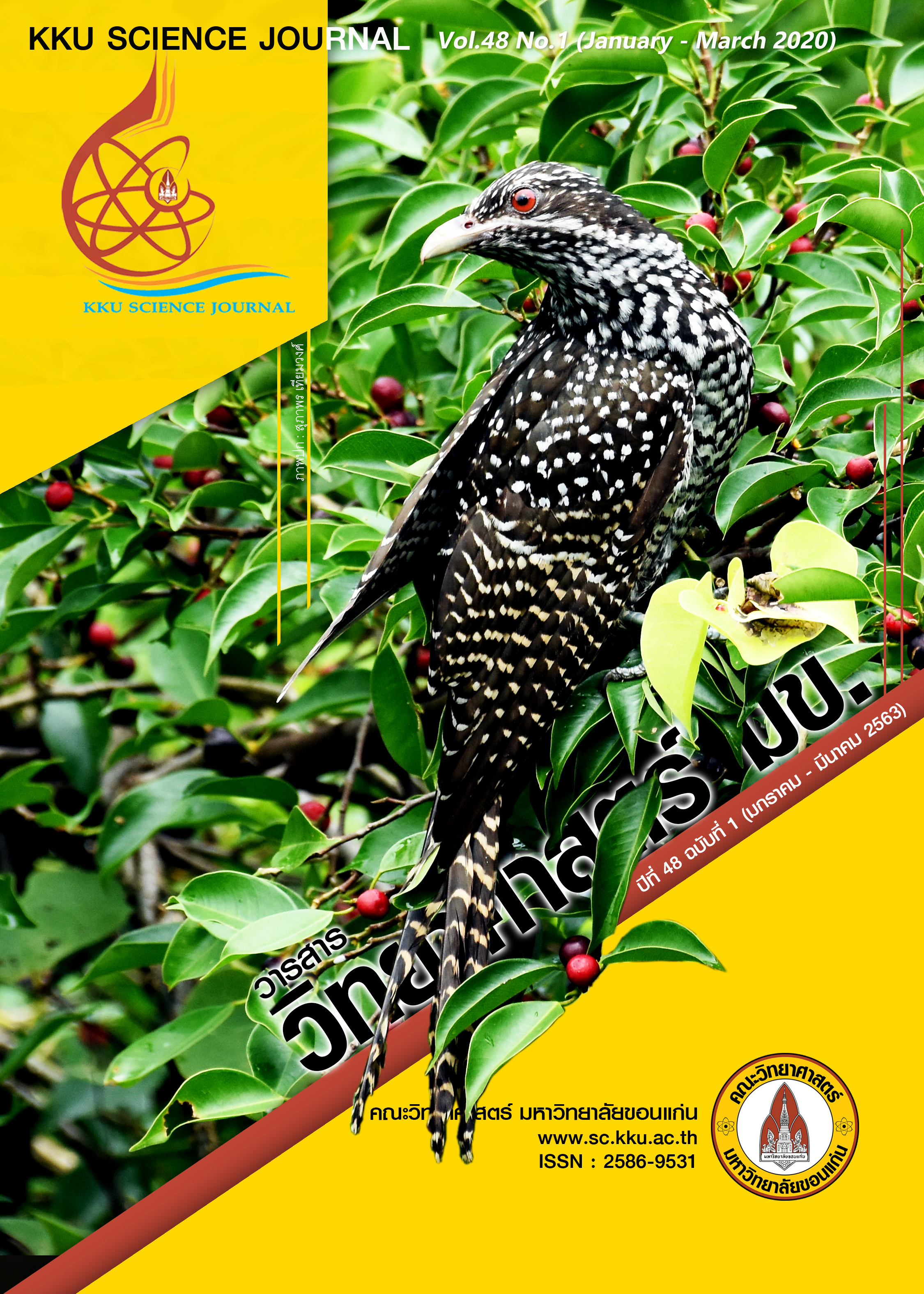Physical Properties of a Deep-contact Binary System EH Cnc
Main Article Content
Abstract
This study aims to study the orbital period, physical components and simulation of an eclipsing binary EH Cnc. Moreover, a closer look at an existence of the third body in this system for determined the evolution of contact binary system is also examined. The data are collected via observation at the Regional Observatory for the Public, Nakhon Ratchasima provided by National Astronomical Research Institute of Thailand (Public Organization) by using 28-inch refracting telescope (PlaneWave CDK) recorded with Apogee U9000 CCD. Two filters, Blue (B) and Yellow (V) in UVB system are also used. The collected data are used to create the light curve in order to form an (O-C) diagram, which is a time difference between the expected and observed eclipse. It is found that the eclipsing binary EH Cnc has a small residual between the primary and the secondary eclipse. The orbital period of this system is 0.4180267 days. The orbital period decreasing rate is 1.16 x 10-3 sec per year causing by momentum loss due to AML theory. Analysis of the (O-C)2 diagram provides a clue about an existence of the third body in the system located at 0.4332 AU from the center of mass. The light curve is analyzed by using PHOBE 0.31a software. It is revealed that the mass ratio of EH Cnc is 2.85, the inclination is 85.70±0.06 degree and the surface temperatures of the primary and secondary stars are 6,400 and 6,350 Kelvin, respectively. The data suggest that this system consists of F0 type star located on the Main sequence of the Hertzsprung-Russell diagram with a physical simulation structure of deep-contact binary system of W UMa type.
Article Details

This work is licensed under a Creative Commons Attribution-NonCommercial-NoDerivatives 4.0 International License.


